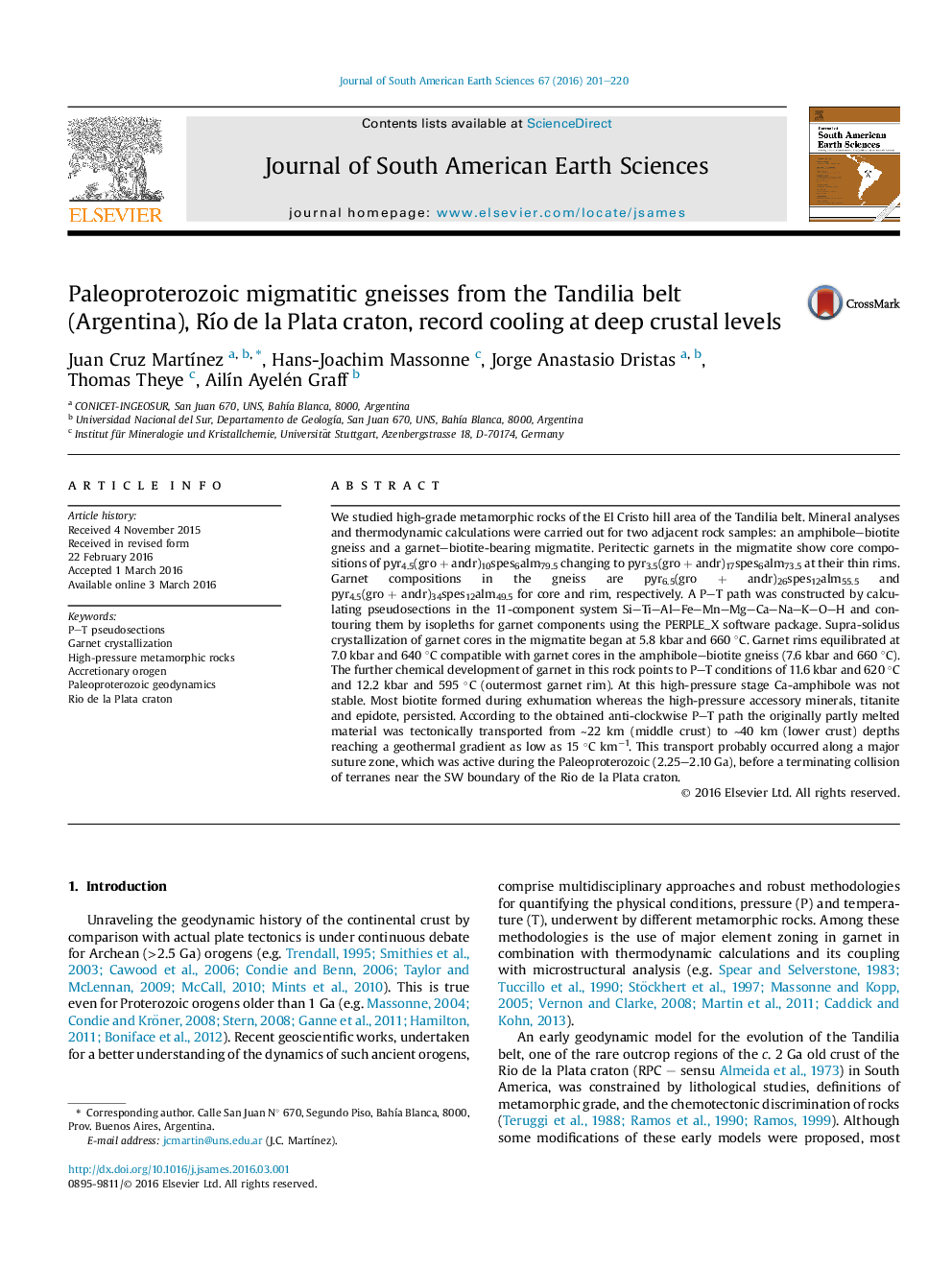| کد مقاله | کد نشریه | سال انتشار | مقاله انگلیسی | نسخه تمام متن |
|---|---|---|---|---|
| 4682018 | 1635143 | 2016 | 20 صفحه PDF | دانلود رایگان |

• We studied migmatitic gneisses from the Tandilia belt, Río de la Plata craton.
• Thermodynamic modeling and garnet compositions constrained robust P–T paths.
• These rocks cooled down by nearly 70 °C, from middle crust to deep crust.
• A geodynamic scenario is designed for the Paleoproterozoic evolution of the craton.
• The proposed geodynamic scenario explained a geothermal gradient of 15 °C km−1.
We studied high-grade metamorphic rocks of the El Cristo hill area of the Tandilia belt. Mineral analyses and thermodynamic calculations were carried out for two adjacent rock samples: an amphibole–biotite gneiss and a garnet–biotite-bearing migmatite. Peritectic garnets in the migmatite show core compositions of pyr4.5(gro + andr)10spes6alm79.5 changing to pyr3.5(gro + andr)17spes6alm73.5 at their thin rims. Garnet compositions in the gneiss are pyr6.5(gro + andr)26spes12alm55.5 and pyr4.5(gro + andr)34spes12alm49.5 for core and rim, respectively. A P–T path was constructed by calculating pseudosections in the 11-component system Si–Ti–Al–Fe–Mn–Mg–Ca–Na–K–O–H and contouring them by isopleths for garnet components using the PERPLE_X software package. Supra-solidus crystallization of garnet cores in the migmatite began at 5.8 kbar and 660 °C. Garnet rims equilibrated at 7.0 kbar and 640 °C compatible with garnet cores in the amphibole–biotite gneiss (7.6 kbar and 660 °C). The further chemical development of garnet in this rock points to P–T conditions of 11.6 kbar and 620 °C and 12.2 kbar and 595 °C (outermost garnet rim). At this high-pressure stage Ca-amphibole was not stable. Most biotite formed during exhumation whereas the high-pressure accessory minerals, titanite and epidote, persisted. According to the obtained anti-clockwise P–T path the originally partly melted material was tectonically transported from ∼22 km (middle crust) to ∼40 km (lower crust) depths reaching a geothermal gradient as low as 15 °C km−1. This transport probably occurred along a major suture zone, which was active during the Paleoproterozoic (2.25–2.10 Ga), before a terminating collision of terranes near the SW boundary of the Rio de la Plata craton.
Figure optionsDownload as PowerPoint slide
Journal: Journal of South American Earth Sciences - Volume 67, April 2016, Pages 201–220